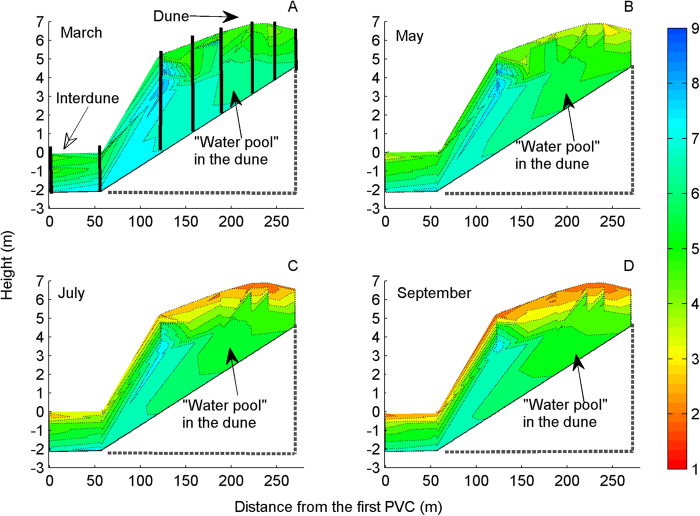Figure 4. Water content of a cross-section over the dune in the growing season (March–September).
The bold lines in A represent the permanent access holes and PVC tubes used to measure the amount of moisture in the soil by the neutron probe. In the Gurbantonggut Desert, a temperate, continental, arid region with a dry, hot summer and a cold winter, annual precipitation is around 160 mm, and annual pan evaporation is 10 times the annual precipitation; soil moisture is recharged during winter and early spring by snow melt in March. During this time, the soil water content is relatively high (A), and soil nutrient levels are the major determinant of seedling establishment. Seeds of both Haloxylon species germinate over the dunes or interdunes after snow melt. Surface water is lost through surface evaporation and transpiration of shallow-rooted plants, making the surface extremely arid during July–September (B–D). The new generation of seedlings of both Haloxylon species suffers water shortage in the summer drought. During this time, biomass allocations patterns are preferentially to root systems for water acquisition and corresponding efficient morphological adjustment in root and shoot systems determine survival and persistence of both species46. In drought conditions, plant phenotypes with fitness advantages for high nutrient conditions may be maladaptive or constrained because species adapted to higher nutrient conditions generally have low root:shoot ratios8,10,52. Alternatively, plants with phenotypic adaptations to drought stress may be maladapted to nutrient rich conditions. During their life cycle, the two Haloxylon species experience relatively high and low nutrient stressful environments and thus different selective pressure in their ontogeny.

